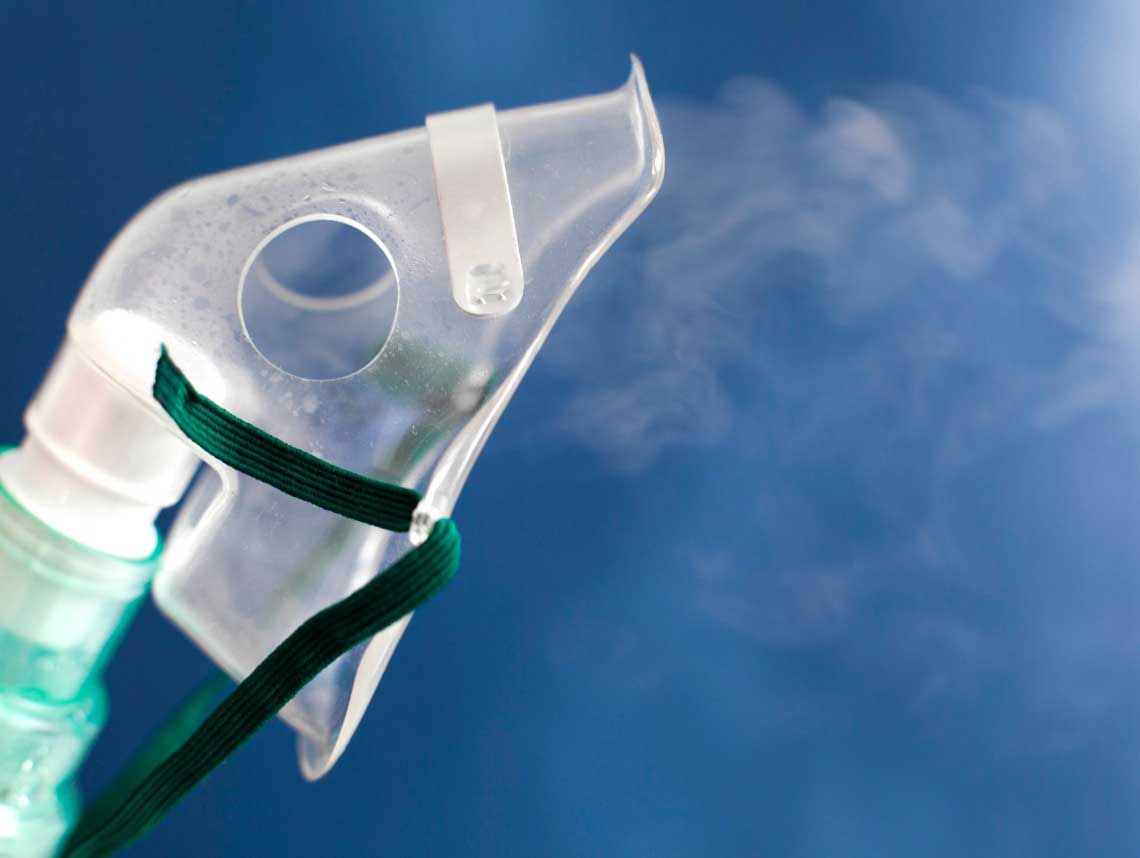Your respiratory system is the part of your body that allows you to breathe. It includes your nose, mouth, throat, windpipe, lungs — among other organs. When working properly, your respiratory system allows you to breathe in oxygen through your nose or mouth and exhale carbon dioxide. But, if your system isn’t functioning properly, it can hinder your ability to get enough oxygen or exhale carbon dioxide.
This is known as acute or chronic respiratory failure. And, depending on your severity of the respiratory failure, it could have permanent — if not deadly — consequences. What’s considered acute versus chronic? And, what can you do to treat your condition?
What is acute respiratory failure?
There are two types of respiratory failure, acute and chronic. As indicated by the name, acute respiratory failure is a short-term condition that typically occurs suddenly and is often treated as a medical emergency. This may include instances where fluid builds up in your lungs and causes your body to store oxygen rather than distributing it into your bloodstream where it can be absorbed into the tissue — also known as hypoxia. But, acute respiratory failure can also occur if too much carbon dioxide is in your blood (hypercapnic). Either situation can cause sudden respiratory failure, and 911 should be called immediately.
Symptoms of Acute Respiratory Failure
The signs of acute respiratory failure will depend on the cause of the failure. If the condition is due to high levels of carbon dioxide, then you may experience rapid breathing and confusion. If it’s due to low oxygen levels, then you can expect an inability to breathe and a bluish coloration of the skin, fingertips, or lips. Regardless of the reason, people with acute respiratory failure often experience:
- Restlessness
- Anxiety
- Sleepiness
- Loss of consciousness
- Rapid and shallow breathing
- Racing heart rate
- Irregular heartbeats
- Profuse sweating
What is chronic respiratory failure?
Unlike acute respiratory failure — which can occur suddenly — chronic respiratory failure gradually develops over time. It usually requires long-term treatment and can be caused by any number of things — including a crushed windpipe, any condition that limits air movement through the body, or hypoxemia or hypercapnic respiratory failure.
Symptoms of Chronic Respiratory Failure
Due to its gradual progression, most symptoms of chronic respiratory failure may not be noticeable at first, but will slowly worsen over time. If left untreated, some people develop an abnormal heart rhythm, stop breathing, and eventually slip into a coma — making it important to seek treatment if you experience one or more of these symptoms:
- Difficulty breathing or shortness of breath
- Coughing up mucus
- Wheezing
- A bluish tint of the skin, lips, or fingernails
- Rapid breathing
- Fatigue
- Anxiety
- Confusion
- Daily headaches
How does hypoxemia play a role?
Whether you have acute or chronic respiratory failure, hypoxia could play a role in what is causing your condition. Hypoxia is the condition that occurs when your tissues don’t receive enough oxygen. This is typically caused by your blood cells receiving less oxygen — which is known as hypoxemia. As a result, your body can experience dangerously low levels of oxygen and begin impacting your brain, liver, or other organs. Some damage to vital organs begins in as little as a few minutes. But, how does this relate to your respiratory system?
If your respiratory system is causing your body to intake less oxygen, then it could cause hypoxemia and lead to hypoxia. Once your body begins shutting down certain organs, your life could quickly become endangered. That’s why it’s important to seek medical attention immediately if you have any of the symptoms of hypoxia, including:
- Changes in the color the skin — ranging from blue to cherry red
- Confusion
- Coughing
- Fast heart rates
- Rapid breathing
- Shortness of breath
- Slower heart rates
- Sweating
- Wheezing
Treating Acute & Chronic Respiratory Failure
Acute and chronic respiratory failure can be diagnosed with a physical exam, but some extra testing may be required — such as imaging testing, arterial blood gas testing, or a bronchoscopy. Once diagnosed and stable, your doctor will likely prescribe medication to help you manage your symptoms. If your condition is acute, you may use an oxygen tank, breathing tube, or ventilator to help you breathe.
If your condition is chronic, attending oxygen therapy may help you learn how to increase your oxygen levels. But, in some cases, you may need a tracheostomy or mechanical ventilator to ensure you’re getting enough oxygen. Unfortunately, with chronic respiratory failure, there is no cure. This means your outlook may be based on your specific condition and how quickly you seek treatment.
Contact Care Options for Kids For Pediatric Home Health Care
It can be hard to balance your time between work, home, and caring for a child. That’s why our team of skilled professionals at Care Options for Kids is here to help.
Our home health care services offer support in the comfort of your home. We refer loving and competent nurses to provide customized care for families — from a few hours a day to around-the-clock supervision. Contact us directly to speak with a home health care professional or request a free in-home assessment. Together we can determine the best plan of action to keep your loved ones happy and healthy.
If you are considering pediatric home health care services, contact the caring staff at Care Options for Kids. Call today at (888) 592-5855.






